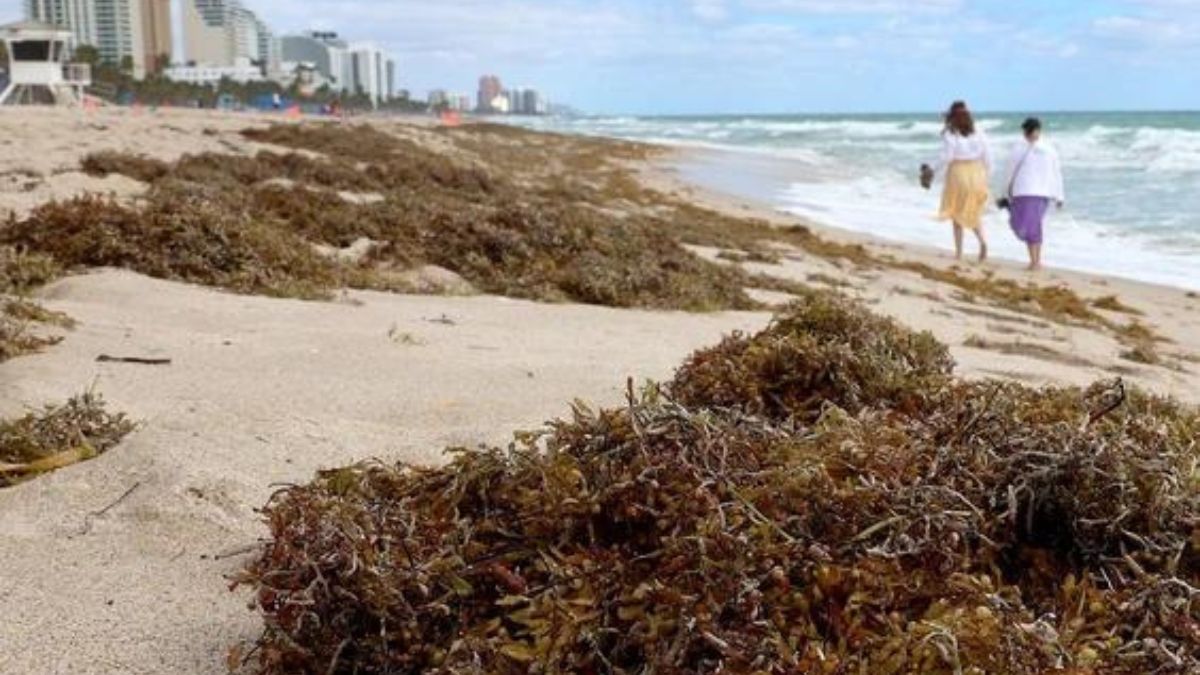As the peak tourist season approaches, the largest seaweed mass in the world is predicted to float toward beaches throughout Florida and the Gulf. Seaweed patches with a strong odor have already started washing up on southern Florida beaches like a bad portent.
As the mass creeps west between the Yucatan and Cuba, hundreds of tons of the algae have accumulated along the beaches in Mexico’s Riviera Maya.
This year, the yearly Atlantic sargassum belt expanded to previously unheard-of sizes, measuring 5,500 miles long, twice as wide as the US, and weighing roughly 13 tons.
According to NASA and the University of South Florida Optical Oceanography Lab, “the vast volumes already in the (Caribbean Sea and to the east) will continue to collect and migrate westward, generating beaching risks along the way.
Also Read: River Cruise Lines Announce New Initiatives, Promos at ASTA River Cruise Expo
WHAT IS Seaweed?
The little, buoyant pneumatocysts, which resemble berries and are loaded with oxygen, are what move the island-like expanse across the Atlantic.
The enormous rafts of rootless sargassum in the North Atlantic provide food, shelter, and breeding sites for birds, shrimp, fish, and crab when they are not endangering beaches. Commercially farmed fish like mahi mahi, jacks, and swordfish are raised in the tide of lush brown seaweed with its sprawling stems and offshoots.
Between West Africa and the Gulf of Mexico, where it circulates and settles along the shore, the sargassum belt travels.
Also Read: Disney’s New Coaster: TRON Lightcycle/Run
IS IT DANGEROUS?
Sargassum’s detrimental impacts on health were first brought to her attention in 2018, according to Dr. Andrea Boggild, Medical Director of the Tropical Disease Unit at Toronto General Hospital:
In an email, she stated, “I started to observe patients returning from the Caribbean with symptoms that were similar to marine estuary syndrome, such as eye irritation, rashes, and respiratory symptoms, which may have also been caused by brief exposure to sargassum.
Source: Montreal Gazette



Leave a Comment